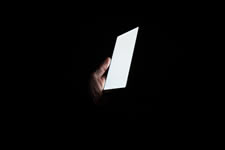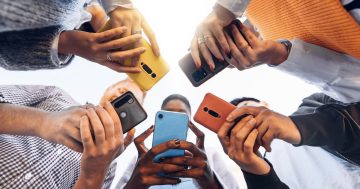Bryan Clark* says one tech consultant has created a plan to strip the addictive nature of the smartphone, leaving only the essential functions that made the device so desirable in the first place.

Photo: Andrew Guan
While it’s not worth rehashing the details, I believe most of us would agree that smartphones are both good and bad.
On the one hand, we have a device that holds the vast majority of human knowledge.
It’s an invention responsible for a shift in power that democratises information and empowers those most capable of dispensing it — in theory, at least.
On the other, we have a doomsday device responsible for wrecking societal norms (for better or worse) and leading to a population that’s sleep-deprived, anxious, and generally unhappy — among other things.
Ignorance, as they say, is bliss.
But we’ve come too far.
There’s no turning back now.
It’s hard to turn off a device that’s equally up for the task, whether it’s settling a drunken bet at the bar, or figuring out that one line in “Gucci Gang” that, uh, wasn’t Gucci Gang.
It’s a device that connects us with friends and family both near and far, or serves up a gentle time waster in the form of games and apps designed to suck the life out of you through addicting feedback loops.
In an excellent blog post, tech consultant Nathan Toups said: “Smart phones are useful, but they are also incredibly addictive, and that addiction is at the epicentre of Silicon Valley’s effort to grab an ever increasing percentage of our minds.”
“In that a substance or behaviour controls us, it becomes our master, and that just won’t do.”
With this, Toups set out to create a plan to strip the addictive nature of the smartphone, thus leaving only what was necessary, what made the device so desirable to begin with.
In a four-part plan, Toups proposed we:
1. Cut out the entertainment. No games, video streaming apps, social media, or news aggregation.
2. Move apps responsible for the dopamine response that keeps us glued to our devices. On his home screen, he left non-sexy apps like Settings, a password manager, audio books, an interval training timer, and a translation tool. Those that remained after the initial purge were moved out of sight and into a folder.
3. Turn on Do Not Disturb. From 9 pm to 6 am, Toup’s phone remains on Do Not Disturb mode, thus blocking calls, notifications, and the annoying dings and pop-ups that keep us coming back for more. This feature is automatically activated when you’re driving, as it should be.
4. Turning off notifications. Toup then turned off all unnecessary notifications on his lock screen, those that made sound, and any notification from apps he didn’t need. He left badges for important things, like messaging apps.
That’s essentially it: the starter kit for ridding yourself of smartphone addiction.
As with all things, it’s not perfect and it certainly won’t work for everyone, but it’s a great start.
From there, Hacker News hit the ground running, offering some other great additions to the strategy.
It’s worth browsing the thread, but here are some highlights:
Yosito says: “Another thing I do to limit my phone’s dopamine rush is to delete all of the social media apps from my phone and only access them via a browser.”
“Sometimes when I really need a break, I’ll create a block list in the ‘Restrictions’ settings on my iPhone and block Facebook, Reddit, Twitter and HN completely.”
“I wish that there was a way for someone else to be able to remotely manage those restrictions for me, so I could uninstall all of the time-suck apps from my phone and only reinstall them by getting permission from a friend who could help me honour my intentions.”
Procparam adds: “One huge distraction-enabler is the fingerprint sensor.”
“It makes things too easy for me — I put my hand in my pocket, put my finger on the sensor, and by the time it’s in front of my face I can be mindlessly browsing Reddit.”
So I would add the following tip: disable the fingerprint sensor if you have one (also face recognition, etc), and replace it with an inconveniently long password.
This way you really need to think about whether it’s worth the time to open your phone.
* Bryan Clark is US Editor for The Next Web in California. He tweets at @bryanclark.
This article first appeared at thenextweb.com.











